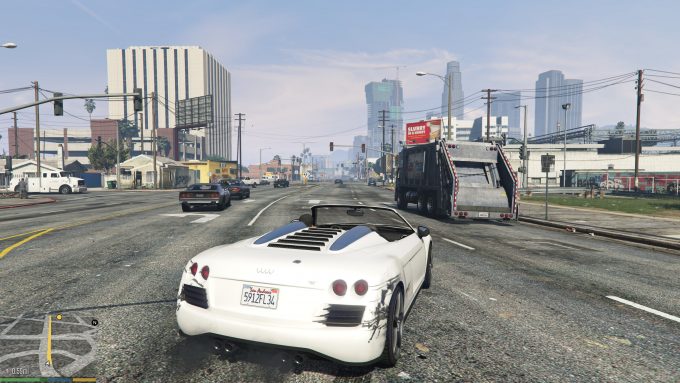- Qualcomm Launches Snapdragon 4 Gen 2 Mobile Platform
- AMD Launches Ryzen PRO 7000 Series Mobile & Desktop Platform
- Intel Launches Sleek Single-Slot Arc Pro A60 Workstation Graphics Card
- NVIDIA Announces Latest Ada Lovelace Additions: GeForce RTX 4060 Ti & RTX 4060
- Maxon Redshift With AMD Radeon GPU Rendering Support Now Available
NVIDIA GeForce GTX 1080 Review: A Look At 4K & Ultra-wide Gaming

NVIDIA’s Pascal architecture brings a lot of goodness to the table, and its GeForce GTX 1080 encapsulates it all. This card isn’t just faster than the TITAN X, it can sometimes even beat out SLI’d GTX 980s. There’s a lot more than just performance boosts with this card, though, so let’s dive in and tackle all of what makes it so great.
Page 4 – Tests: Grand Theft Auto V, Metro Last Light & Rise Of The Tomb Raider
Grand Theft Auto V
Does a game like this even need an introduction? Any Grand Theft Auto game on the PC is a ‘console port’, proven by the fact that it always comes to the PC long after the consoles, but Rockstar has at least done PC gamers a favor here by offering them an almost overwhelming number of graphical options to fine-tune, helping to make it suitable for benchmarking, especially at high resolutions.
Testing: The mission Repossession is chosen for testing here, with the benchmark starting as soon as our character makes his way to an unsuspecting car. The benchmark ends after a not-so-leisurely drive to a parking garage, right before a cutscene kicks in.
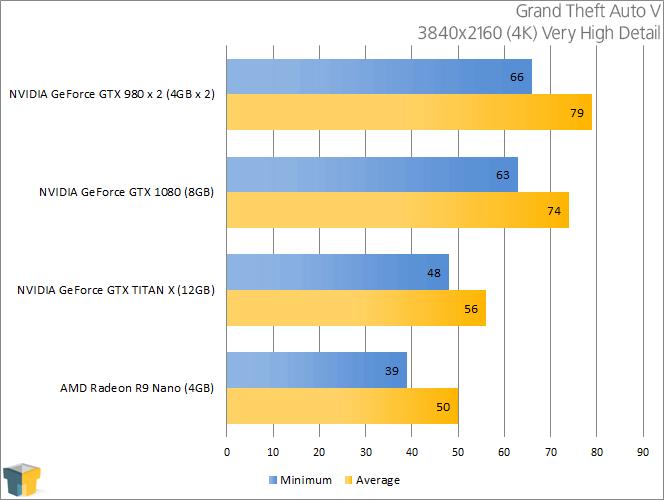
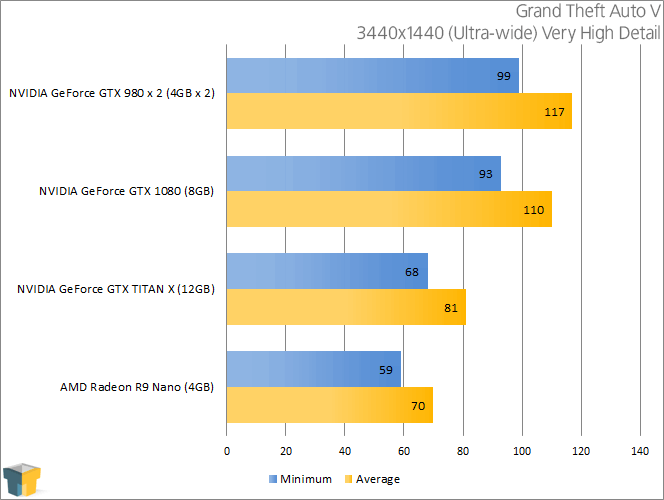
When NVIDIA released its GeForce GTX TITAN X, it labeled it as a “4K” gaming card, despite the fact that at good settings, gamers would almost never see 60 FPS. At least with GTA V, this is a modern game where 60 FPS at 4K can be had by a single GTX 1080. The best part? The minimum FPS doesn’t even dip below 60 FPS. Want to go the ultra-wide route? The performance is even more impressive.
Metro Last Light Redux
Like a couple of other games in our stable, Metro Last Light might seem like an odd choice give its age. After all, the original version of the game came out in 2013, and its Redux version came out in late 2014. None of that matters, though, as the game is about as hardcore as it can get when it comes to GPU punishment.
Testing: The game’s built-in timedemo is used for testing here, which lasts 2m 40s. While the game can spit out its own results file, it’s horribly inaccurate, so Fraps is still used here.
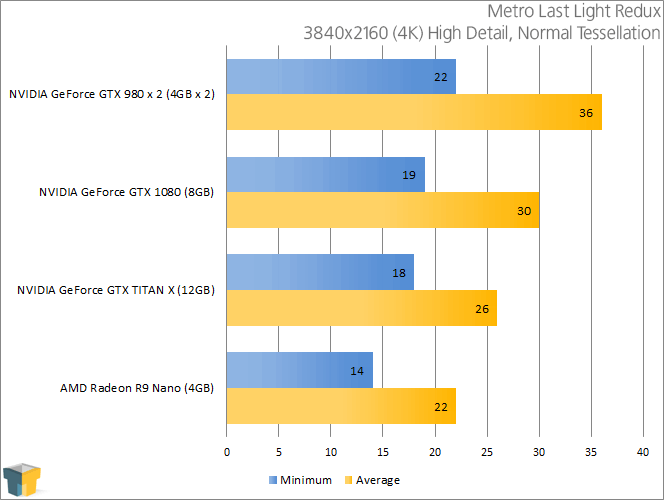
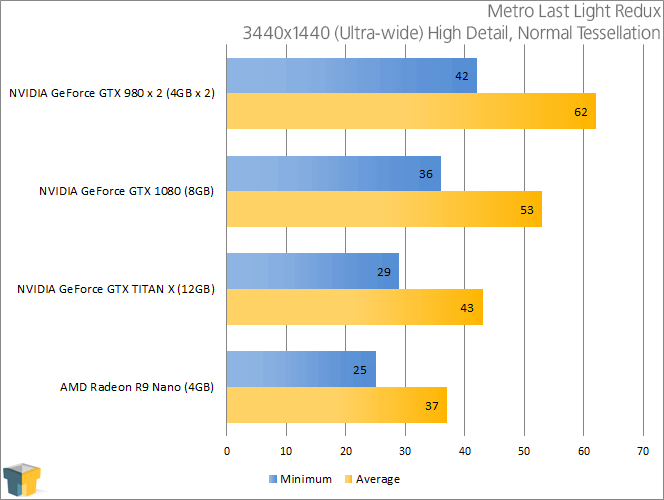
Last Light‘s timedemo is only good as a timedemo; it’s not representative of real gameplay whatsoever. Bearing that in mind, this is one game where SLI’d 980s come out ahead of the 1080, but not by too much. Conversely, the GTX 1080 sits comfortably ahead of the TITAN X.
Rise Of The Tomb Raider
Lara Croft has sure come a long way. The latest Tomb Raider iteration becomes one of the first titles on the market to support DirectX 12, but even without it, the game looks phenomenal at high detail settings (as the below screenshot can attest).
Testing: Geothermal Valley is the location chosen for testing with this title, as it features a lot shadows and a ton of foliage. From the start of our saved game, we merely walk down a fixed path for just over a minute and stop the benchmark once we reach a broken down bridge (the shot below is from the benchmarked area).
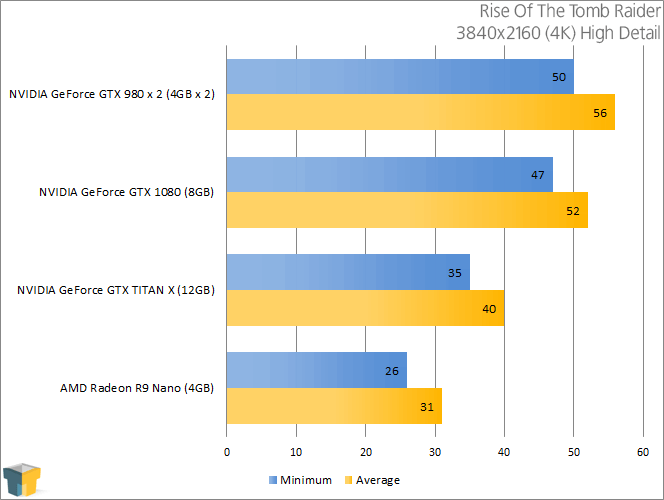
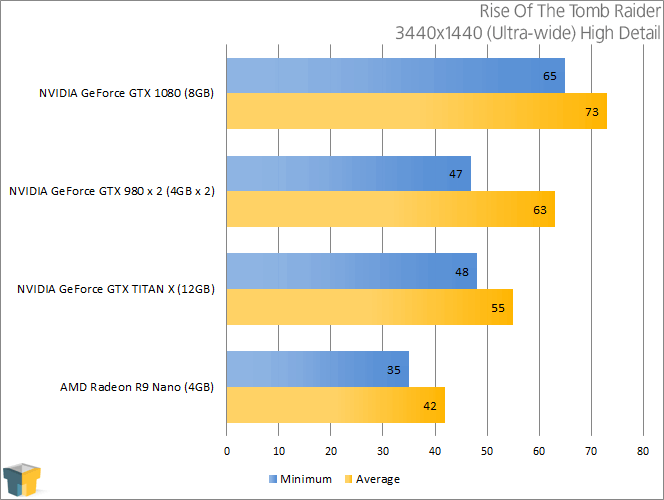
For some reason, the SLI’s 980s managed to overtake the GTX 1080 at 4K, but at the ultra-wide resolution of 3440×1440, the 1080 reigns supreme with an impressive 10 FPS lead over the SLI configuration. Note that this isn’t with the game at max detail, so this is one game where SLI’d 1080s would be needed to hope for 4K/60 at that detail.
Support our efforts! With ad revenue at an all-time low for written websites, we're relying more than ever on reader support to help us continue putting so much effort into this type of content. You can support us by becoming a Patron, or by using our Amazon shopping affiliate links listed through our articles. Thanks for your support!




